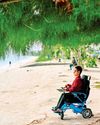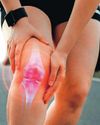
India's Peaceful Nuclear Explosion (PNE) in Pokhran marked the beginning of its seminal journey towards becoming a nuclear weapons state. It was a giant stride in so far as India's nuclear journey was concerned, achieved against heavy odds.
Several names figure in the gallery of fame of India's nuclear journey, but physicist Homi Bhabha's stands out. He was the one who convinced prime minister Jawaharlal Nehru to take the nuclear plunge, despite the odds.
The Pokhran test took place against the backdrop of intense hostility towards India by several world powers. India had, by then, decisively defeated Pakistan in a war, where it had the backing of much of the west and, implicitly China.
The war led to its dismemberment and the birth of a new state, Bangladesh. Undertaking a nuclear test at a time like that, hence, was an extremely bold decision by India's leaders. Many countries were also intent on punishing India for disrupting the so-called established nuclear order. Undeterred, India had proceeded to carry out an underground test in May 1974. PNE experiments were not frowned upon by the International Atomic Energy Agency (IAEA) at the time. Yet, India faced the ire of both the IAEA and much of the world. The immediate fallout was disruption of low-enriched uranium fuel supplies for the US-supplied boiling water reactors in Tarapur.
Esta historia es de la edición June 09, 2024 de THE WEEK India.
Comience su prueba gratuita de Magzter GOLD de 7 días para acceder a miles de historias premium seleccionadas y a más de 9,000 revistas y periódicos.
Ya eres suscriptor ? Conectar
Esta historia es de la edición June 09, 2024 de THE WEEK India.
Comience su prueba gratuita de Magzter GOLD de 7 días para acceder a miles de historias premium seleccionadas y a más de 9,000 revistas y periódicos.
Ya eres suscriptor? Conectar

Walking in pine forest can have the same effect as a prescription drug
INTERVIEW - KATHY WILLIS, professor of biodiversity, the University of Oxford, and author, Good Nature

MORE THAN A HELPING HAND
Maria Victoria Juan spent a lifetime healing wounded soldiers, and she can't think of anything she could have done better

Against all odds
Mohamed Raishan Ahmed was born with spinal muscular atrophy, which made him unable to sit, stand or walk. Recently, the Maldivian underwent a rare, complex surgery in India that now allows him to sit upright. At 23, the fact that he is alive is in itself an achievement. But he has gone beyond mere survival-with a pursuit of excellence

A pacemaker tale
From science fiction to reality, with a touch of southern Indian wisdom

Driving safe
Taxi drivers endure gruelling hours, cramped seats and relentless traffic, making them prime candidates for health issues like back pain, hypertension, diabetes and insomnia.

Good food, good life
From the moment of birth, we establish a relationship with food—a nourishing link that requires care and attention to stay healthy

POOR SLEEP IN MIDLIFE COULD AGE YOUR BRAIN FASTER
PEOPLE WHO EXPERIENCE SLEEP ISSUES, such as difficulty falling asleep or staying asleep in their 40s, may show more signs of brain ageing in late midlife. Poor sleep may accelerate brain atrophy that is associated with dementia.

BRAIN SCANS SHOW MINDFULNESS MEDITATION CAN REDUCE PAIN
CAN MINDFULNESS MEDITATION actually relieve pain, or is it just a placebo effect?

NON-SURGICAL OPTION TO EASE KNEE ARTHRITIS
A NEW, MINIMALLY INVASIVE procedure called genicular artery embolisation (GAE) can effectively reduce pain, improve quality of life and reduce progression of the disease and the need for knee replacement surgery in people with knee osteoarthritis.

EARLY ONSET DIABETES, BELLY FAT LINKED TO DEMENTIA
FACTORS SUCH AS DIABETES and belly fat in midlife can put you at risk of dementia and Alzheimer's disease later in life.